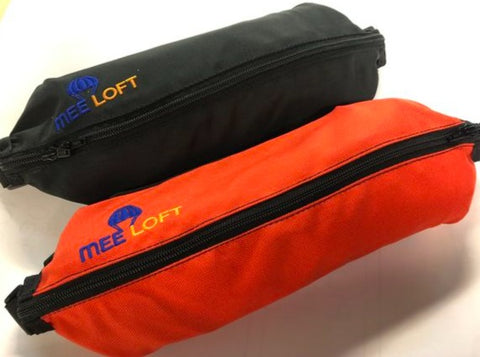Rig Maintainence
“It will be alright for one more jump” – These are words that I am sure most of you have heard at least once on the DZ. I say this with certainty because I know that I have.
As the owner of a busy loft and as a full time rigger for many years now, as you can imagine I have seen a lot of equipment in use and also removed from service. Both from fun jumpers and from hard working, full time training / tandem operations. It has been far too common in this time, that when I point out an area of wear on an item or a component that needs replacing I am given a reply that runs along the lines of “yeah, I saw that but didn’t get around to replacing it yet” or “sure, I saw that but figured it would be okay for a few more jumps as I knew I was bringing it to the loft this week”. The worst types of answer however are those such as “it’s not an issue, if it breaks, it will be on opening and I will just use my reserve”. Sure we all trust our reserves but misunderstanding about how and when stresses are applied to our equipment means that this sort of answer can be very wrong. Fatally wrong in fact.
In some cases it is true that the item can indeed go for a few more jumps safely, in fact there are times when I see a particular point of wear on a rig not deteriorate for many repack cycles.
Another way to consider this is if you look at a rubber band that has a nick in it are you the sort of jumper that stows the lines in it carefully so it doesn’t break or are you the kind of jumper that pulls it hard to see if it snaps. Are you the kind of jumper who wants to ensure the stow tension required to promote an orderly deployment, not a big mess that could lead to catastrophic consequences.
I have often been led to contemplate whether gear is too ‘safe’ in the modern world and think that we have forgotten many of the lessons that have gone before. I found an example of that speaking to one person recently who is communicating from the confines of their hospital bed. We were discussing the incident they were involved in and I was given a particular insight into personal choices when they told me they felt very lucky to be alive. This was because an identical incident to this had killed a friend of theirs some years ago.
The simple fact of the matter is that most of the required re-occurring maintenance that your rig needs costs less than a jump ticket and often about the same as a beer ticket.
Rubber bands – a jump tickets worth of rubber bands will keep even the most gnarly of jumpers pockets filled with bands for a year
Closing Loops – a jump ticket worth of closing loops will see a full time working skydiver with loops left over at the end of the year, consider how long they will last the average fun jumper
Kill-line – a worn kill line can be replaced for half the cost of a jump ticket ensuring that the Pilot Chute has an opportunity to do its work
Lower control lines – these high wear items tend to need replacing every 150 jumps or so and will cost you the princely sum of half a jump ticket generally. Consider the outcome if they break during landing.
Complete control lines – about every 250-300 it's a good idea to replace these and it will set you back about a jump ticket plus a beer ticket
Soft Links – just a jump ticket to keep your canopy connected to your risers. Generally these should last as long as your line-set but if during your monthly maintenance you note they need replacing then do so. There are documented fatalities where a worn soft-link was instrumental in their demise
BOC - Pretty important that you keep this nice and tight! Keeps that slippery PC from coming out until you want it to! Just abour two jump tickets sees this replaced.
Pilot chute – this item does not need replacing that often in the scheme of things… but for about two-three jump tickets you get a brand new one with the capacity to deploy your main when you decide to stop plummeting.
Risers – manufacturers recommend changing your risers between 200-600 jumps depending on who you ask. Now we are getting into the realms of what might be a weekends worth of jump tickets. 4-5 jump tickets for these babies.
Line Set Complete – OK. The first big cost item… about ten jump tickets for purchase and installation from your friendly local rigger, this cost will generally include a new set of soft links, as well as a thorough inspection of your canopy for any wear and tear you may have missed. Wear and tear which if addressed now is just a simple thing, often included for free but if left could lead to major surgery and costs.
If you are unsure if something is ok or not ask you local Packer A or Rigger, they are trained to look at these things. If no-one is handy and you would like some assistance then please do not hesitate to shoot us through a question along with a photo and we will do what we can to help.
Blue Skies & Safe Jumps!


